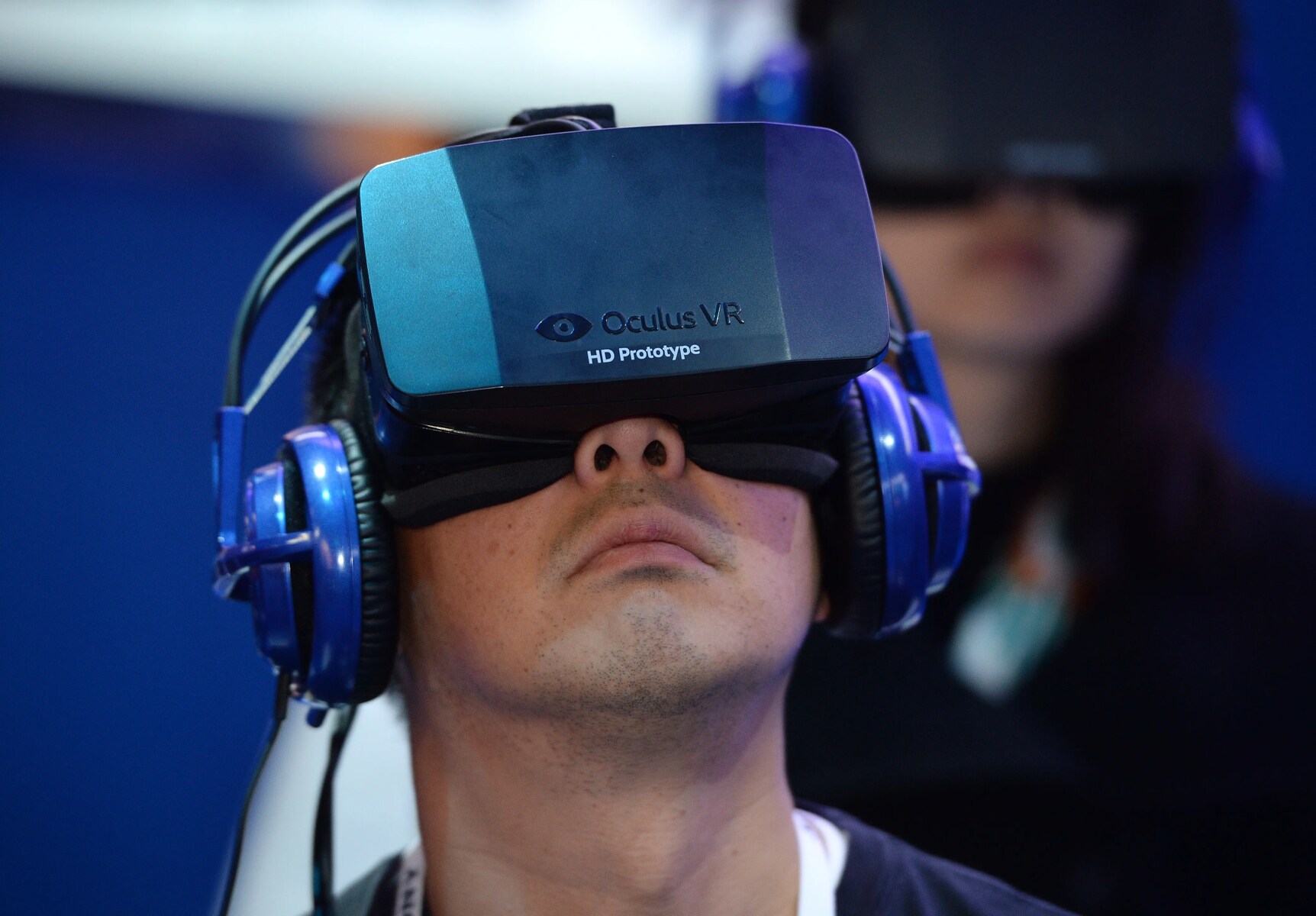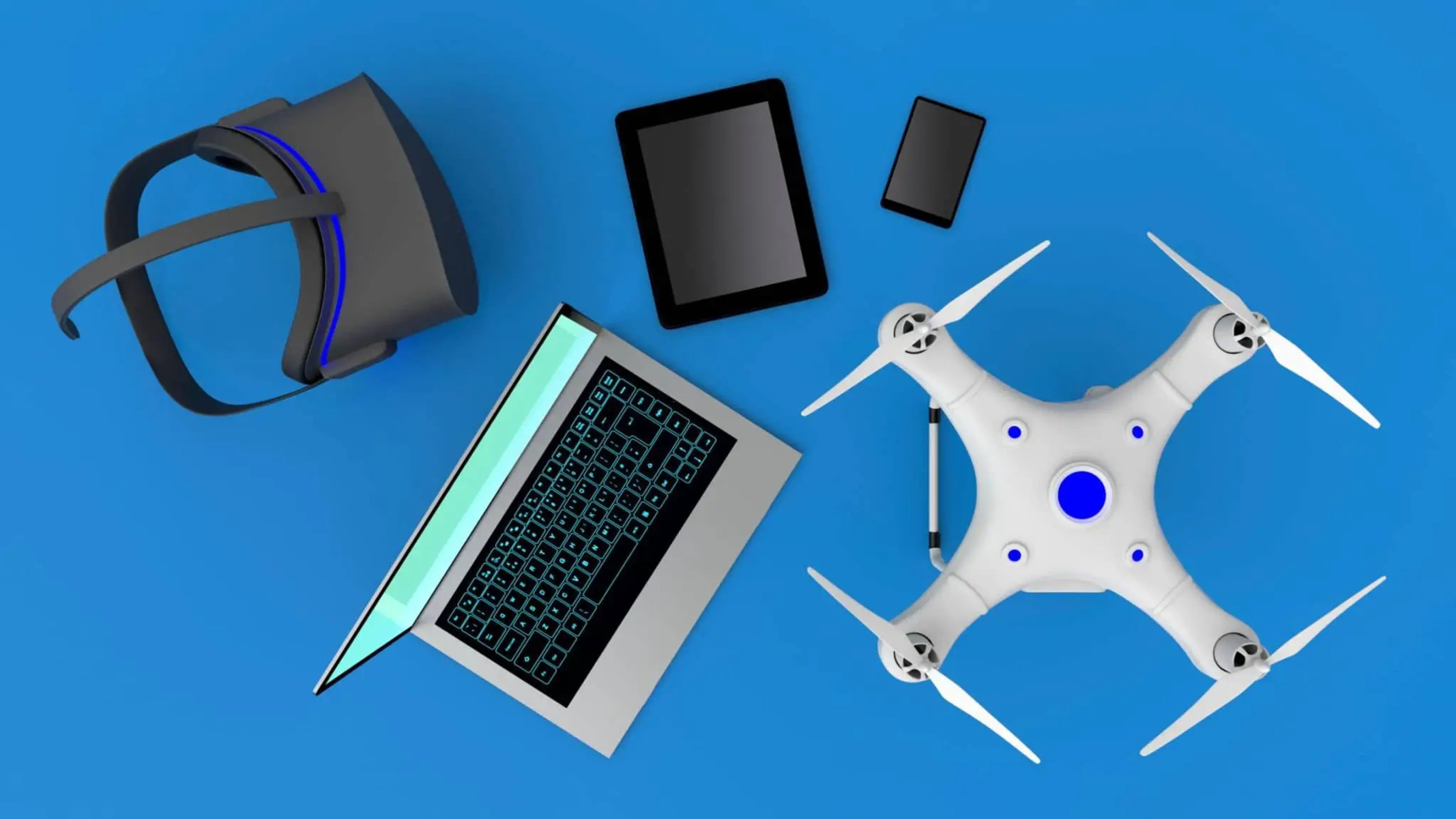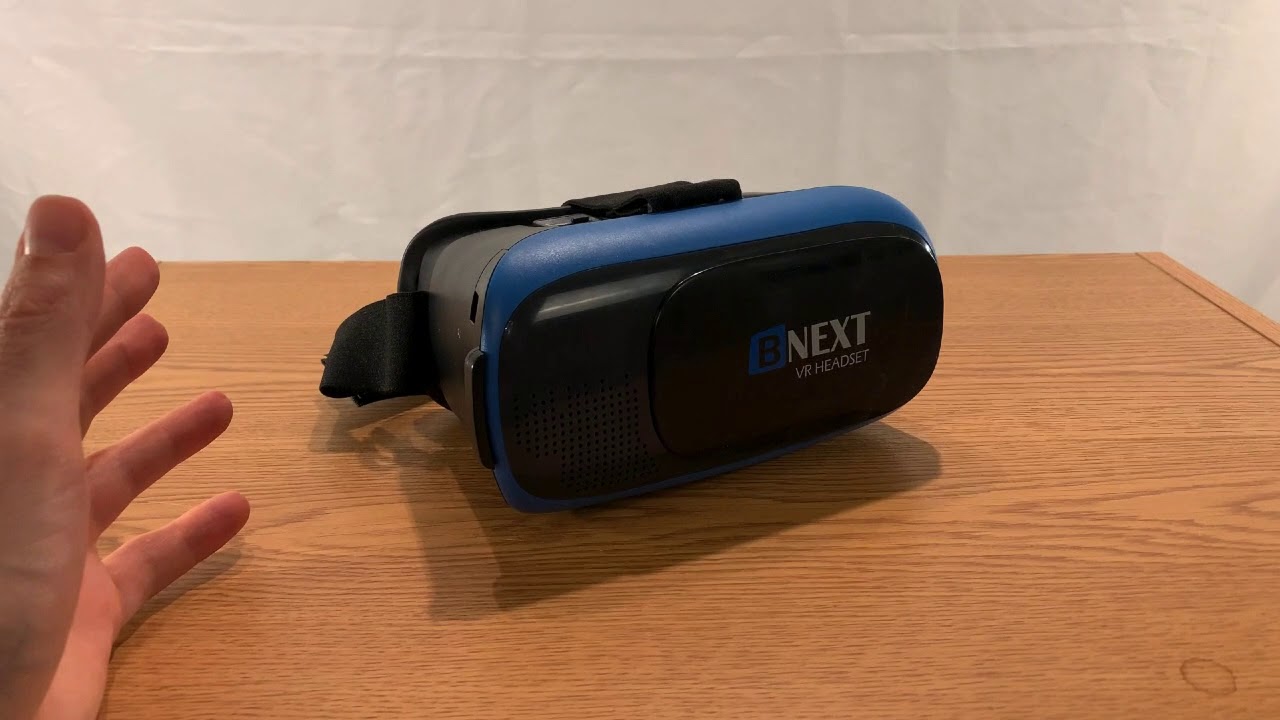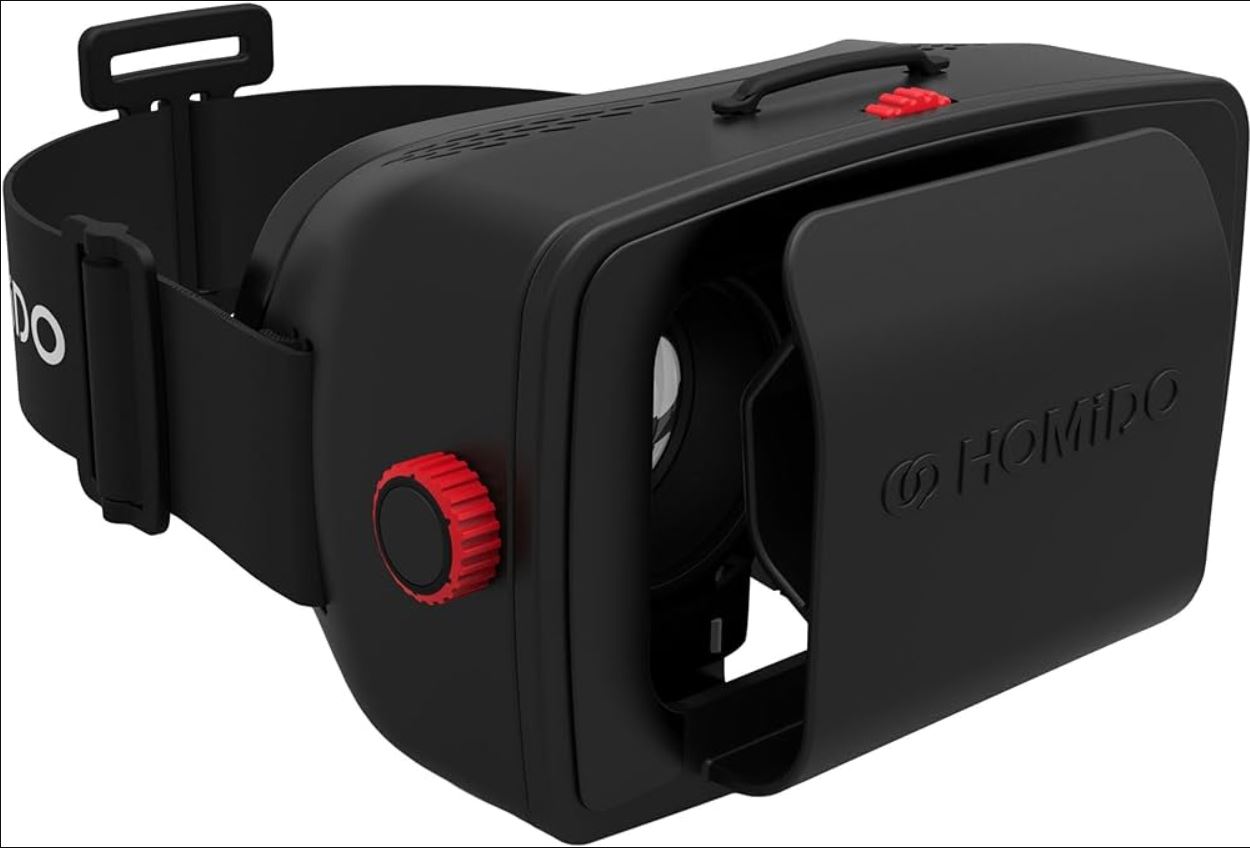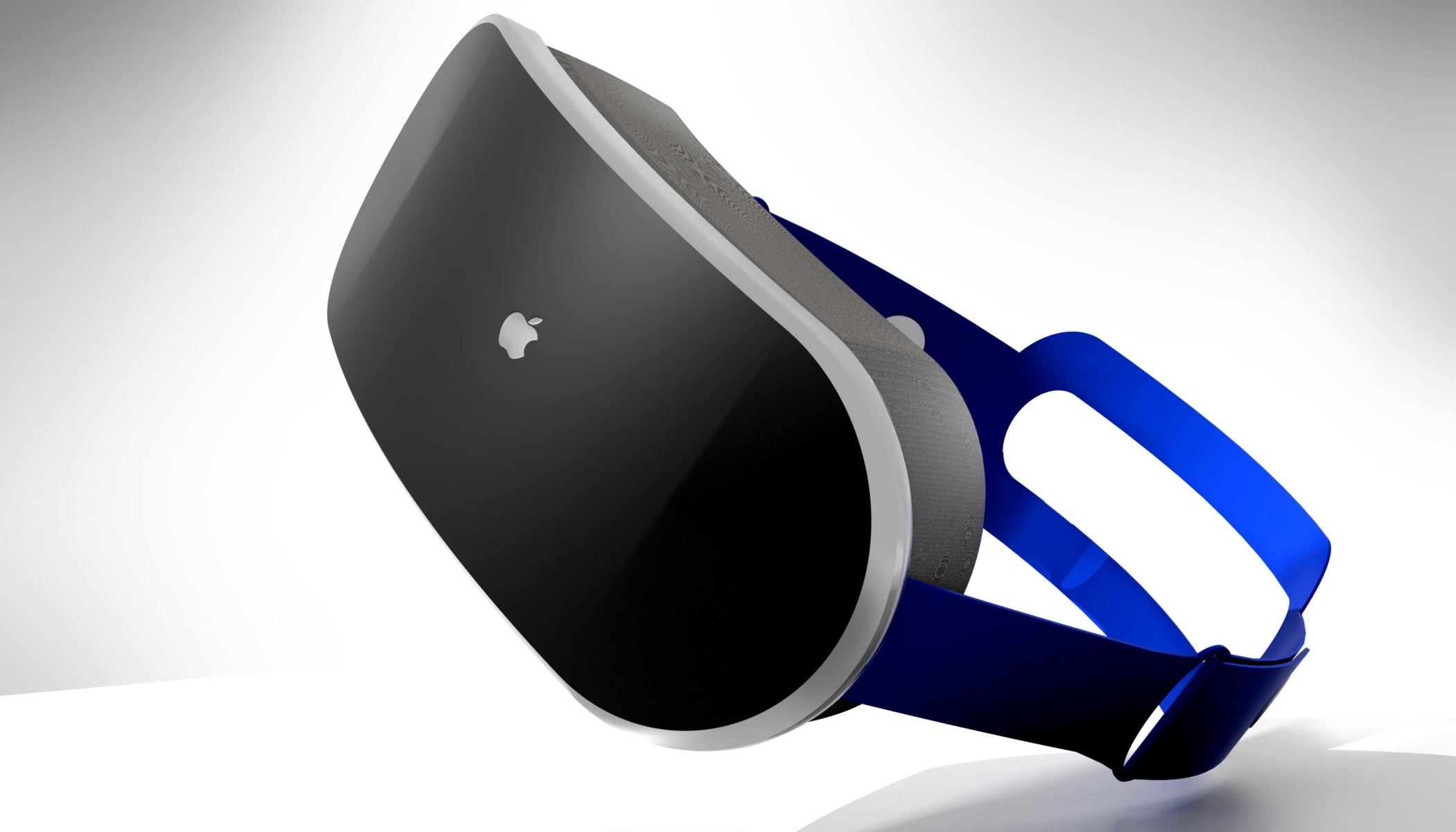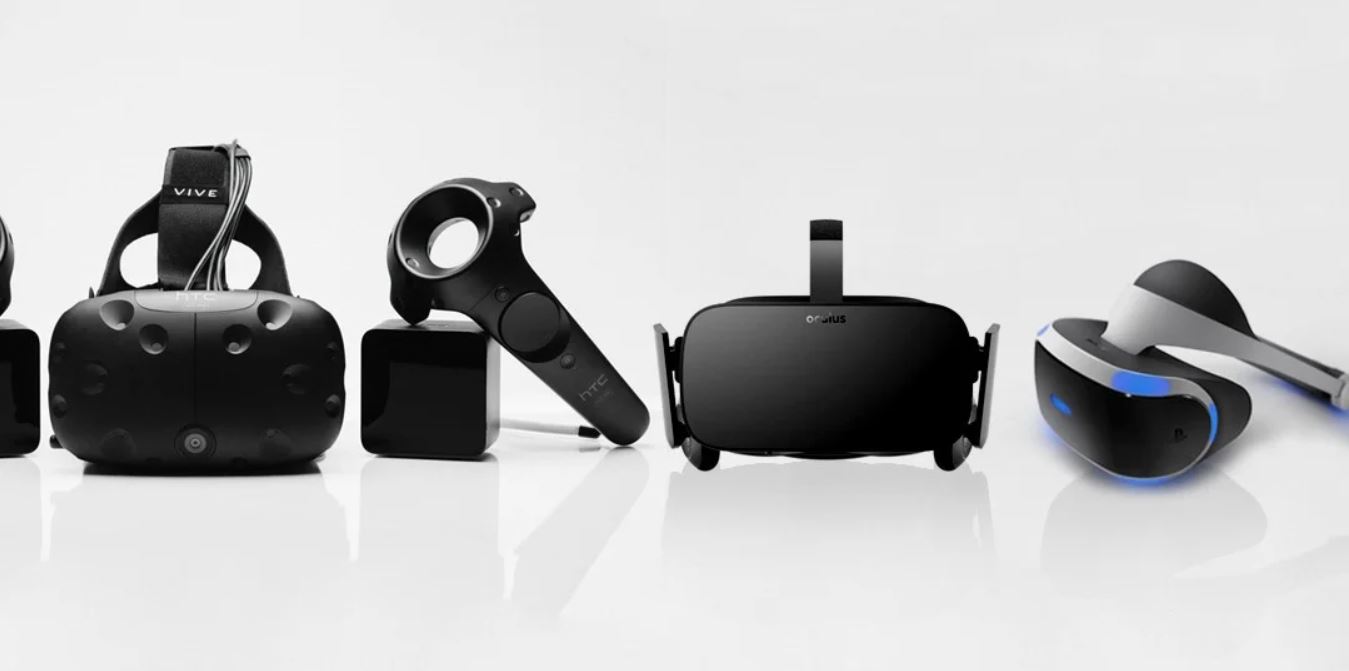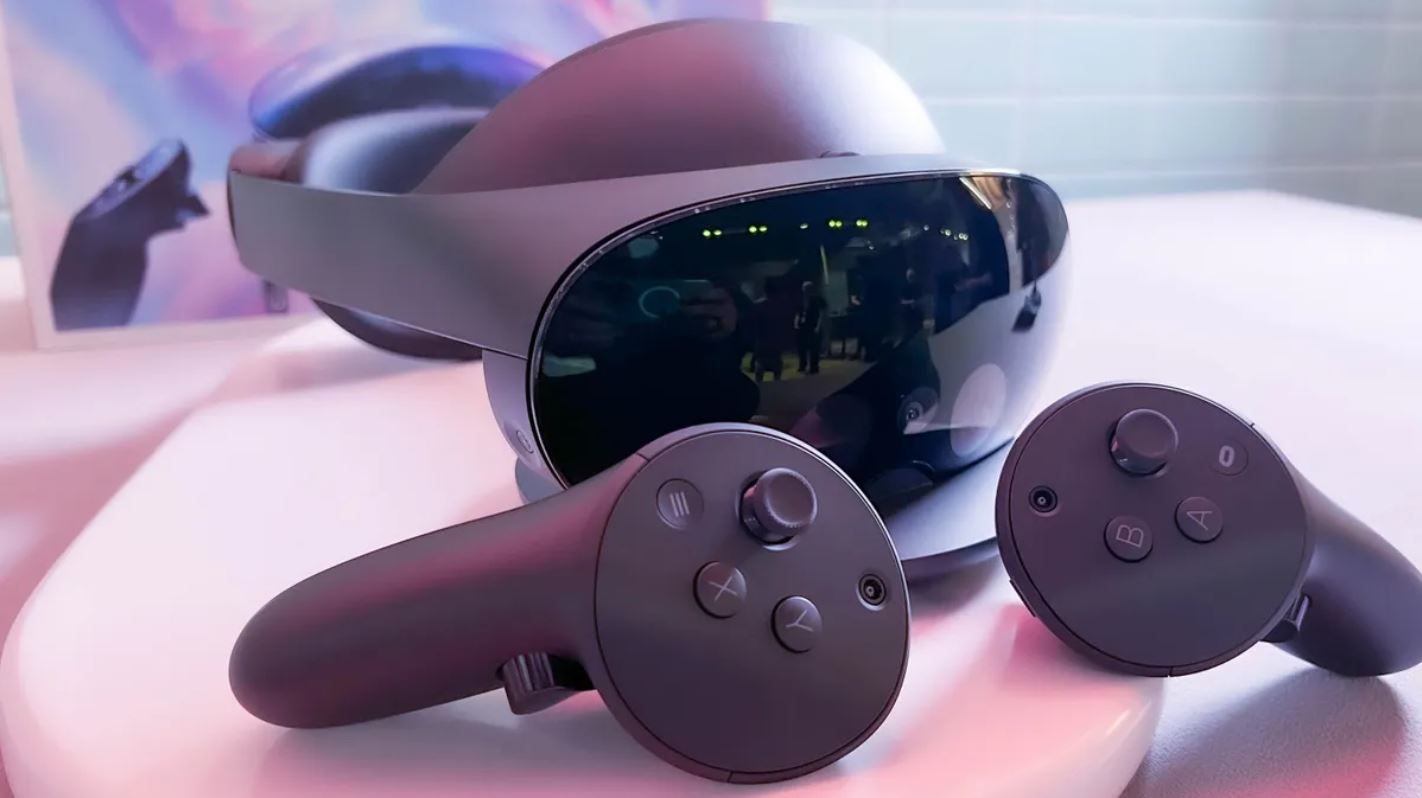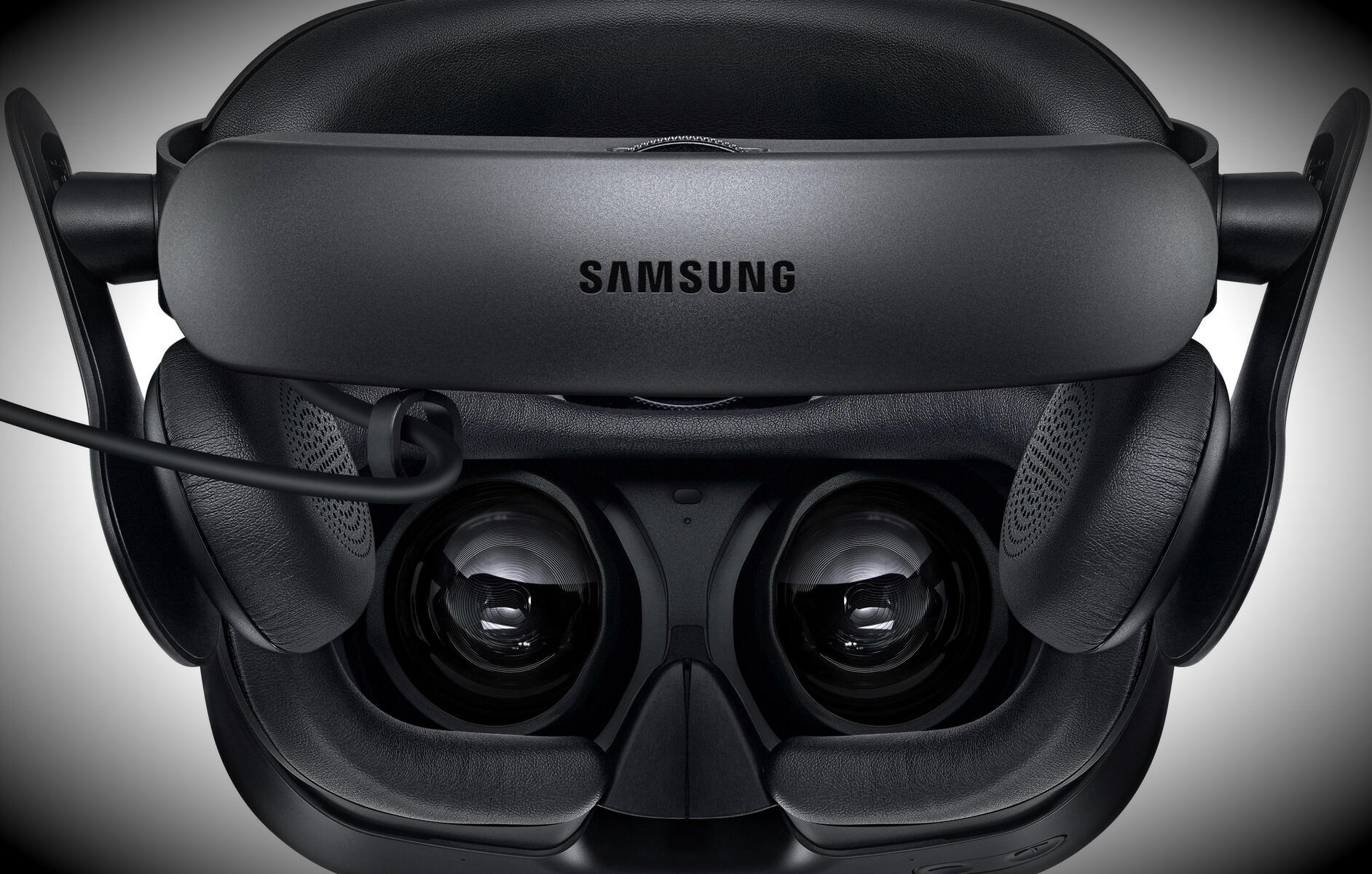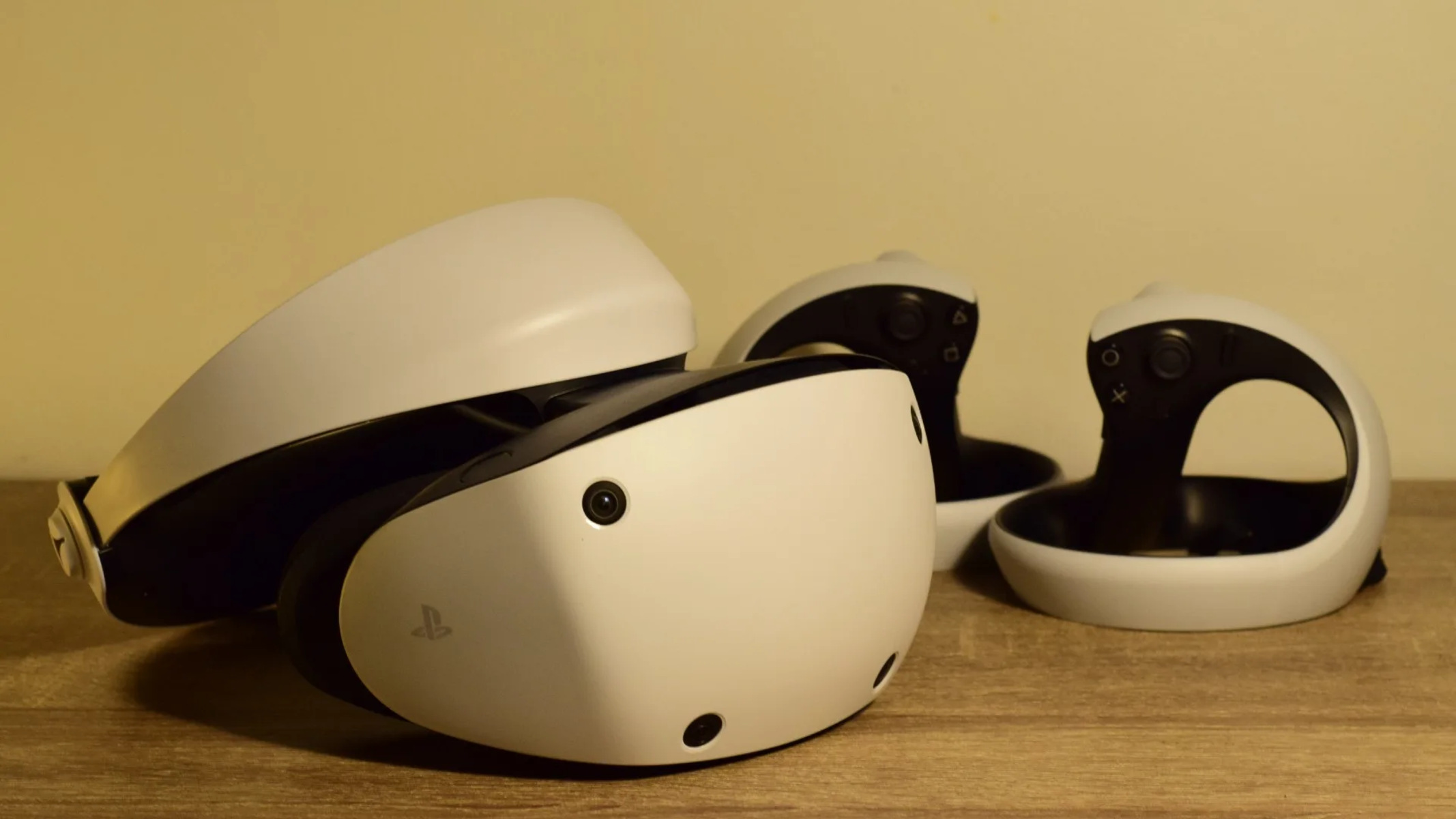Introduction
Virtual Reality (VR) technology has transformed the way we experience entertainment, gaming, and even professional applications. With the use of a VR headset, users are transported to immersive virtual worlds, offering a sense of presence and interactivity like never before. In this article, we will explore the inner workings of a VR headset and how it creates a captivating and lifelike experience.
A VR headset is a device that you wear on your head, much like a pair of goggles or a helmet, which allows you to enter a simulated environment. It consists of a head-mounted display (HMD), various sensors, built-in audio, and controllers that enable interaction with the virtual world. Using a combination of advanced technologies, a VR headset aims to trick your senses into believing that you are present in a different reality.
With the rapid advancements in technology, VR headsets have become more accessible and affordable for consumers. Companies like Oculus, HTC, Sony, and Valve have released their own VR headsets, each offering unique features and experiences.
So, how exactly does a VR headset work? Let’s dive into the components and functionalities that make these devices so remarkable.
What is a VR Headset?
A VR headset, also known as a virtual reality headset, is a wearable device that allows users to enter and interact with simulated virtual environments. It is designed to provide a fully immersive experience by presenting a three-dimensional visual world and replicating the sensation of presence.
The main component of a VR headset is the head-mounted display (HMD). This is the part of the device that you wear on your head, covering your eyes and sometimes your ears. The HMD typically consists of two small screens, one for each eye, that display synchronized images. These images are carefully calibrated to produce a stereoscopic effect, giving the illusion of depth and perspective.
Alongside the display, VR headsets incorporate a range of sensors to track the user’s head movements and orientation. These sensors detect the rotation and position of the headset in real-time, allowing the virtual environment to respond accordingly. This tracking is crucial for creating a seamless and immersive experience, as it enables users to look around and explore the digital world just as they would in the real world.
In addition to visual immersion, audio plays a significant role in enhancing the VR experience. Many VR headsets come equipped with built-in headphones or integrate with external audio devices. This spatial audio technology delivers realistic sound effects from different directions, further immersing users in the virtual environment.
Furthermore, VR headsets often feature controllers or input devices that enable users to interact with the virtual world. These devices can range from simple handheld controllers to more sophisticated hand, finger, or even full-body tracking systems. The ability to touch, grab, and manipulate virtual objects provides a higher level of engagement and interactivity for users.
It’s important to note that VR headsets can be categorized into two main types: tethered and standalone. Tethered headsets require a connection to a powerful computer or gaming console to process and render the virtual content. Standalone headsets, on the other hand, have built-in processors and storage, allowing them to operate independently without the need for external devices.
Overall, a VR headset is a gateway to a virtual world, enabling users to explore, interact, and experience new realities. By combining advanced visual displays, motion tracking, audio technology, and intuitive controllers, these devices offer a truly immersive and engaging experience like never before.
How does a VR Headset work?
At first glance, a VR headset may seem like a complex piece of technology, but the underlying principles behind its functionality are relatively straightforward. The key to creating a realistic and immersive virtual experience lies in the seamless integration of various components and technologies.
The primary component of a VR headset is the head-mounted display (HMD). This display consists of two small screens, one for each eye, that project synchronized images. These screens are usually OLED or LCD panels that offer high resolutions and refresh rates to deliver crisp and smooth visuals. The images displayed on these screens are carefully calibrated, taking into account factors such as perspective, field of view, and stereoscopic rendering, to create a convincing 3D effect.
To track the movements of the user’s head, VR headsets employ a combination of sensors. These sensors can include gyroscopes, accelerometers, and magnetometers, among others. Gyroscopes measure angular velocity, while accelerometers gauge linear acceleration. Magnetometers, on the other hand, detect the Earth’s magnetic field to determine the headset’s orientation. By combining the data from these sensors, the headset can accurately track the user’s head movements in real-time.
Accurate head tracking is crucial for creating a sense of presence and immersion in a virtual environment. When the user moves their head, the VR headset detects the motion and adjusts the displayed visuals accordingly. This ensures that the perspective in the virtual world matches the user’s perspective in the real world, allowing for a seamless and natural experience.
In addition to visual immersion, sound plays a vital role in enhancing the overall VR experience. Many VR headsets feature integrated audio systems, such as built-in headphones or speakers positioned close to the user’s ears. These audio systems leverage spatial audio technology to deliver realistic and immersive soundscapes. By simulating sound coming from different directions in the virtual environment, users experience a heightened sense of presence and are better able to locate and identify sounds within the virtual space.
Another key aspect of a VR headset is its input system. VR controllers are typically utilized to enable users to interact with the virtual world. These controllers can come in various forms, such as handheld devices, handheld controllers with motion tracking capabilities, or even gloves that track the movement of individual fingers. By providing intuitive and precise input mechanisms, users can manipulate virtual objects, navigate menus, and perform actions, adding a layer of interactivity and immersion to the experience.
Overall, a VR headset combines visual displays, head tracking, audio systems, and input devices to create a believable and immersive virtual experience. By tricking the user’s senses into perceiving the virtual world as real, these devices transport users to new and exciting realms, opening up endless possibilities for entertainment, education, and professional applications.
The Display
The display is a critical component of a VR headset, as it is responsible for presenting the virtual world to the user’s eyes. The quality of the display greatly influences the immersion and visual fidelity of the virtual experience.
VR headsets typically use two small screens, one for each eye, to create a stereoscopic effect. These screens may be OLED (Organic Light-Emitting Diode) or LCD (Liquid Crystal Display) panels, depending on the headset model. OLED displays are often favored for their ability to produce deeper blacks and vibrant colors, resulting in more immersive visuals. LCD displays, on the other hand, offer better resolution and reduced screen-door effect, which is the perception of seeing gaps between the pixels.
The resolution of the display is a crucial factor in determining the level of detail and clarity in the virtual environment. Higher resolutions help reduce the visibility of individual pixels, resulting in a smoother and more realistic visual experience. This is especially important in VR, as users are positioned in close proximity to the screen, making pixelation more apparent. Many modern VR headsets offer resolutions of 1080p or higher for each eye, providing sharp and clear visuals.
The refresh rate of the display is equally important in VR, as it affects the smoothness of the rendered images. A higher refresh rate, typically 90Hz or above, helps reduce motion blur and enhances the overall visual comfort. This is particularly crucial as motion sickness can be a concern for some users when there is a perceived disconnect between the head movements and the displayed visuals.
Field of view (FOV) is another aspect influenced by the display. FOV refers to the extent of the observable environment at any given moment. A wider FOV allows users to perceive a greater portion of the virtual world, enhancing the sense of immersion. In most VR headsets, FOV ranges from 90 to 120 degrees, although larger FOV comes with increased computational requirements and can impact performance.
Distortion correction is employed to compensate for the optical distortion caused by the curvature of the lenses and the proximity of the screens to the user’s eyes. This correction ensures that the visual content appears undistorted and aligned, providing a more natural and comfortable viewing experience.
Overall, the display plays a crucial role in delivering a convincing and immersive virtual experience. The resolution, refresh rate, FOV, and distortion correction all contribute to creating realistic visuals that draw users into the virtual world.
The Sensors
The sensors in a VR headset are responsible for tracking the user’s head movements and orientation, allowing for a seamless and immersive virtual experience. These sensors work together to provide real-time data that is used to adjust the displayed visuals accordingly.
Gyroscopes are one of the primary sensors used in VR headsets. These sensors measure angular velocity, detecting rotational movements of the headset. By tracking the speed and direction of these movements, the gyroscopes can determine the rotation of the user’s head in three axes (pitch, yaw, and roll). This information is crucial for updating the virtual environment in real-time, ensuring that the visuals accurately match the user’s head movements.
Accelerometers are another essential component in VR headset sensors. These sensors measure linear acceleration, allowing for the detection of movement and changes in velocity. By combining the data from the accelerometers with the information from the gyroscopes, the headset can accurately track not only rotational movements but also linear movements of the user’s head. This enables a more precise and realistic representation of the user’s interactions within the virtual world.
Magnetometers are often included in VR headsets to provide additional functionality. These sensors detect the Earth’s magnetic field and can determine the orientation of the headset relative to the Earth’s magnetic north. Magnetometers work in conjunction with the gyroscopes and accelerometers to fine-tune the sensor data, resulting in even more accurate tracking of the user’s head movements.
Infrared (IR) sensors are also commonly utilized in some VR headset models. These sensors emit infrared light and measure the time it takes for the light to bounce back after hitting objects in the environment. By triangulating the position of these objects, the IR sensors can track the positional movements of the headset. This allows for more precise tracking of the user’s head in relation to the virtual environment.
Some VR headsets also incorporate eye-tracking technology. These eye-tracking sensors monitor the user’s eye movements and can determine the focus point and gaze direction. Eye-tracking not only provides more accurate interaction capabilities in virtual environments but also enables foveated rendering, a technique that optimizes the rendering process by allocating more processing power to the area of the display where the user’s eyes are focused.
The combination and integration of these sensors allow for precise and responsive tracking of the user’s head movements in the virtual environment. By continuously monitoring and updating the position and orientation of the headset, the sensors ensure that the user’s experience remains immersive and natural.
Tracking and Movement
In a VR headset, tracking and movement play a crucial role in creating a seamless and immersive experience. Accurate tracking allows the virtual environment to respond in real-time to the user’s movements, enhancing the sense of presence and immersion.
Head tracking is the foundation of user interaction in VR. By tracking the user’s head movements, the VR headset can update the displayed visuals accordingly, ensuring that the virtual world aligns with the user’s perspective. This tracking is achieved through a combination of sensors, such as gyroscopes, accelerometers, magnetometers, and sometimes infrared sensors. These sensors work together to detect the orientation and position of the headset, allowing for precise tracking of the user’s head movements in real-time.
Positional tracking takes the tracking capabilities a step further by monitoring the user’s physical movements in space. This allows users to move around and explore the virtual environment beyond just head movements. Positional tracking can be achieved using various methods, including infrared sensors, cameras, or even external tracking devices. By accurately tracking the user’s position, the VR headset can create a more immersive experience and enable interactions that involve physical movement within the virtual world.
Hand tracking is an important aspect of interaction in VR. By accurately tracking the user’s hand movements and gestures, VR headsets can simulate the presence of hands in the virtual environment. Hand tracking can be achieved through different methods, such as using dedicated hand tracking devices, depth cameras, or through controllers with integrated sensors. This allows users to reach out, grab objects, and interact with the virtual world in a more intuitive and natural manner.
Full-body tracking takes immersion to another level by tracking the user’s entire body movements. This is typically achieved using a combination of multiple sensors placed on various parts of the body. Full-body tracking enables a more realistic representation of the user within the virtual environment, allowing for more immersive experiences, such as physically interacting with objects or performing actions like walking, crouching, or jumping.
It’s important to note that the accuracy and precision of tracking can vary depending on the type of sensors and tracking technology used. Higher-end VR headsets often offer more advanced tracking capabilities, providing smoother and more realistic movements. However, even with more basic tracking solutions, the overall experience can still be highly immersive and enjoyable.
Overall, tracking and movement capabilities are essential elements in a VR headset. Accurate head tracking, positional tracking, hand tracking, and even full-body tracking come together to create an immersive and interactive virtual experience, allowing users to explore and interact with virtual worlds in a way that feels natural and engaging.
Audio
Audio is a vital component of the immersive experience provided by a VR headset. It enhances the sense of presence and helps to create a realistic and captivating virtual environment.
Many VR headsets come equipped with built-in audio systems, such as integrated headphones or speakers positioned close to the user’s ears. These audio systems provide spatial audio, which is designed to simulate sound coming from different directions and distances in the virtual environment. By replicating how sound behaves in the real world, spatial audio adds depth and realism to the virtual experience.
With spatial audio, users can accurately locate the source of sounds within the virtual environment. For example, if a sound is emitted from behind the user, the audio system will play the sound through the appropriate earphone or speaker to create the perception of the sound originating from the back. This level of audio precision enhances the immersion and contributes to a more convincing virtual experience.
Sound effects play a crucial role in creating a lifelike atmosphere in VR. Whether it’s the sound of footsteps, chirping birds, or falling rain, these audio cues help to make the virtual environment feel vibrant and realistic. By accurately placing sound effects within the virtual space, the audio system triggers the user’s auditory senses, further enhancing the overall immersion.
In addition to environmental sounds, spatial audio is also important in communication and multiplayer experiences. When interacting with other users in VR, accurate positioning of voices and directional audio cues can make conversations more natural and realistic. This enables more intuitive interaction and collaboration within virtual worlds.
Furthermore, audio can be utilized to provide feedback and enhance the sense of presence during interactions. For example, when users interact with virtual objects, the audio system can generate haptic audio feedback, simulating the sensation of touch through sound. This audio feedback can help users feel a greater sense of connection and engagement with the virtual world.
It’s worth noting that some VR headsets also support 3D audio technologies, such as Ambisonics or binaural audio. These techniques create a spatial audio experience that accounts for the user’s head movements, providing a more accurate and immersive representation of sound in three-dimensional space. This adds another layer of realism to the virtual environment and contributes to a more immersive user experience.
In summary, audio plays a crucial role in the overall VR experience. Spatial audio, realistic sound effects, and accurate positioning of audio cues all contribute to the immersion and sense of presence in virtual environments. By delivering a convincing audio experience, VR headsets create a multi-sensory experience that engages the user’s auditory senses and brings virtual worlds to life.
Controllers and Input
Controllers and input devices are essential components of a VR headset, enabling users to interact and engage with the virtual environment. These devices provide intuitive and precise input methods that enhance immersion and facilitate seamless navigation within virtual worlds.
Handheld controllers are a common input method for VR headsets. These controllers typically feature buttons, triggers, and joysticks, allowing users to manipulate virtual objects, navigate menus, and perform various actions. The controllers are tracked in real-time, correlating their movements with the position of the user’s hands in the virtual environment. This enables users to reach out, pick up objects, and interact with the virtual world in a natural and intuitive manner.
Some VR headsets take hand tracking a step further by using sensors to track the movements of individual fingers. This allows for more intricate and detailed interactions, such as individually grasping objects or making gestures. Hand tracking technology provides a more direct and immersive way to interact within the virtual environment, eliminating the need for physical controllers.
In addition to handheld and hand tracking controllers, VR headsets can also incorporate other input devices. These can include motion controllers, which detect the user’s movements in physical space, or even haptic feedback devices, which provide tactile sensations to enhance the sense of touch. These input devices further enrich the user’s interaction and immersion in the virtual world.
Gesture recognition is another input method that is often utilized in VR applications. By analyzing the user’s hand movements and gestures, the VR headset can interpret specific gestures as commands or actions within the virtual environment. This allows users to navigate menus, trigger specific functions, or manipulate objects using natural hand movements.
Voice recognition is also gaining popularity as an input method in VR. By integrating voice recognition technology, users can control the virtual environment and interact with virtual characters using their voice commands. This hands-free approach to input provides convenience and a more natural way of communication within virtual worlds.
Third-party peripherals and accessories can further expand the range of input methods available in VR. These can include full-body tracking suits, omnidirectional treadmills, or even specialized input devices designed for specific applications or simulations. These peripherals allow for more immersive and tailored experiences, enabling users to interact with the virtual environment in unique and meaningful ways.
Overall, controllers and input devices are essential for enabling users to interact and engage within virtual worlds. They provide intuitive and precise input methods that enhance immersion, empower users to perform actions, and facilitate seamless navigation within virtual environments. The continuous advancement and innovation in these input technologies contribute to the ever-evolving and expanding possibilities of the VR experience.
Immersion and the User Experience
One of the key goals of a VR headset is to provide a highly immersive user experience, transporting users to virtual worlds that feel realistic and engaging. The level of immersion plays a vital role in creating a sense of presence and enhancing the overall user experience.
Visual immersion is a fundamental aspect of VR. By presenting high-resolution displays and a wide field of view, VR headsets strive to create a visual experience that mimics real-world perception. The stereoscopic effect, achieved through dual screens and precise 3D rendering, adds depth to the visuals, allowing users to perceive distance and dimension in the virtual environment. The quality of the visuals, including resolution, refresh rate, and color accuracy, greatly impacts the immersion and enhances the realism of the virtual experience.
Audio immersion is equally important in VR. Spatial audio technology plays a crucial role in replicating sounds from different directions and distances, just as they would be experienced in the real world. Accurate positioning of sound cues and realistic sound effects contribute to the sense of presence and help users feel fully immersed in the virtual environment. Well-designed audio can provide context, feedback, and enhance the overall atmosphere, further enriching the user experience.
Interactivity and user engagement are key factors in achieving immersion. Precise head and hand tracking, combined with intuitive controllers or hand tracking technology, allow users to interact with the virtual world in a natural and seamless manner. The ability to physically move, manipulate objects, and perform actions within the virtual environment enhances the sense of presence and fosters a deeper connection with the virtual world.
Real-time responsiveness and smooth performance are critical for maintaining a high level of immersion. When there is a noticeable delay between user actions and the corresponding responses from the virtual environment, it can break the sense of presence and negatively impact the user experience. Achieving low latency and high frame rates ensures that the virtual world reacts quickly and responsively to user inputs, creating a seamless and immersive experience.
The overall design, narrative, and content of VR experiences also play a significant role in immersion. Engaging storylines, captivating environments, and meaningful interactions contribute to the user’s emotional investment and sense of escapism. A well-designed VR experience can evoke powerful emotions, transport users to new worlds, and create memorable moments that stick with them long after they remove the headset.
Comfort is another crucial aspect of the user experience in VR. Immersion can be disrupted if users experience discomfort or motion sickness. VR headset manufacturers prioritize ergonomic design, comfortable materials, and adjustable fits to ensure a comfortable wearing experience. Additionally, developing content and experiences that minimize motion sickness triggers and provide smooth locomotion options help users enjoy the virtual experience without discomfort or unease.
In summary, immersion is at the core of the VR experience. By combining visual and audio elements, intuitive interactivity, responsive performance, engaging content, and user comfort, VR headsets strive to create a sense of presence and transport users to immersive virtual worlds. The level of immersion directly impacts the overall user experience, allowing for unparalleled entertainment, education, and professional applications.
Conclusion
VR headsets have revolutionized the way we experience digital content, offering immersive and captivating virtual realities. Throughout this article, we have delved into the intricacies of how VR headsets work and the various components that contribute to their functionality.
From the display that presents lifelike visuals to the sensors that track our movements, VR headsets create a seamless and immersive experience by tricking our senses into believing we are present in a different reality. The integration of audio technology further enhances immersion, while controllers and intuitive input methods enable us to interact and engage with virtual environments.
We have explored the importance of immersion in the user experience, highlighting how visual and audio elements, interactivity, and content design come together to transport users to new realms. The sense of presence and realism within virtual environments, coupled with smooth performance and ergonomic design, contribute to a truly immersive and enjoyable VR experience.
As technology continues to evolve, VR headsets are becoming more accessible and sophisticated. From tethered headsets that rely on external devices to standalone headsets that offer greater flexibility, there is a wide range of options available to cater to different needs and budgets.
VR headsets have immense potential beyond gaming and entertainment. They are increasingly being used in fields such as education, training, design, therapy, and more. As the technology continues to advance, we can expect to see even more innovative applications and use cases that harness the power of VR headsets.
In conclusion, VR headsets have ushered in a new era of immersive experiences. By combining advanced technologies, visual displays, sensors, audio systems, and input methods, they transport users to virtual worlds that feel incredibly real. The ever-expanding possibilities of VR hold immense promise for the future, and it is an exciting time to witness the evolution of this transformative technology.







